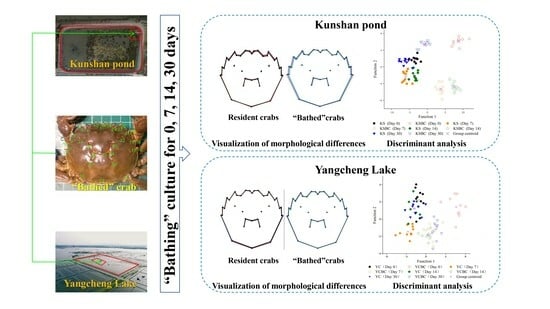Identification of “Bathed” Chinese Mitten Crabs (Eriocheir sinensis) Using Geometric Morphological Analysis of the Carapace
Abstract
1. Introduction
2. Materials and Methods
2.1. Sample Collection
2.2. Establishment and Extraction of a Landmark
2.3. Mean Shape and Thin-Plate Spline Analysis
2.4. Discriminant Analysis
3. Results
3.1. Morphological Visualization Analysis of Carapaces
3.2. Discriminant Analysis of Morphological Differences of Carapaces
4. Discussion
4.1. Rationality of Landmark Selection
4.2. Analysis of Morphological Differences between Original and “Bathed” Crabs
4.3. Ecological Significance of Morphological Difference Analysis of Carapace
4.4. Application Value of Carapace Morphology Discrimination of “Bathed” Crabs
5. Conclusions
Author Contributions
Funding
Institutional Review Board Statement
Data Availability Statement
Acknowledgments
Conflicts of Interest
References
- Wu, H.; Ge, M.; Chen, H.; Jiang, S.; Lin, L.; Lu, J. Comparison between the nutritional qualities of wild-caught and rice-field male Chinese mitten crabs (Eriocheir sinensis). LWT-Food Sci. Technol. 2020, 117, 108663. [Google Scholar] [CrossRef]
- Cheng, H.; Wu, H.; Liang, F.; Ge, M.; Jiang, S.; Lin, L.; Lu, J. Comparison of the nutritional quality of three edible tissues from precocious and normal adult female Chinese mitten crabs (Eriocheir sinensis). J. Aquat. Food Prod. Technol. 2021, 30, 49–61. [Google Scholar] [CrossRef]
- Wang, X.; Zheng, R.X.; Zhang, D.M.; Lei, X.Y.; Wang, S.; Wan, J.W.; Liu, H.J.; Chen, Y.K.; Zhao, Y.L.; Wang, G.Q.; et al. Effects of different stocking densities on growth performance, nutritional quality and economic benefit of juvenile female Chinese mitten crabs (Eriocheir sinensis) in rice-crabs culture systems. Aquaculture 2022, 553, 738111. [Google Scholar] [CrossRef]
- Zheng, C.C.; Jiang, T.; Luo, R.J.; Chen, X.B.; Liu, H.B.; Yang, J. Geometric morphometric analysis of the Chinese mitten crabs Eriocheir sinensis: A potential approach for geographical origin authentication. N. Am. J. Fish. Manag. 2021, 41, 891–903. [Google Scholar] [CrossRef]
- Duvaleix, S.; Emlinger, C.; Gaigné, C.; Latouche, K. Geographical indications and trade: Firm-level evidence from the French cheese industry. Food Policy 2021, 102, 102118. [Google Scholar] [CrossRef]
- Ye, H.P.; Yang, J.; Xiao, G.S.; Zhao, Y.; Li, Z.M.; Bai, W.D.; Zeng, X.F.; Dong, H. A comprehensive overview of emerging techniques and chemometrics for authenticity and traceability of animal-derived food. Food Chem. 2023, 402, 134216. [Google Scholar] [CrossRef] [PubMed]
- Xue, J.R.; Jiang, T.; Chen, X.B.; Liu, H.B.; Yang, J. Geometric morphometric analysis on the carapace difference between ‘bathed’ and Yangcheng Lake originated Eriocheir sinensis. Acta Hydrobiol. Sin. 2020, 44, 587–594. (In Chinese) [Google Scholar] [CrossRef]
- Kishida, M.; Kanaji, Y.; Xie, S.; Watanabe, Y.; Kawamura, T.; Masuda, R.; Yamashita, Y. Ecomorphological dimorphism of juvenile Trachurus japonicus in Wakasa Bay, Japan. Environ. Biol. Fishes 2011, 90, 301–315. [Google Scholar] [CrossRef]
- Kenthao, A.; Jearranaiprepame, P. Ecomorphological diversification of some barbs and carps (Cyprininae, Cyprinidae) in the Lower Mekong Basin of Thailand. Zoology 2020, 143, 125830. [Google Scholar] [CrossRef] [PubMed]
- Fox, N.S.; Veneracion, J.J.; Blois, J.L. Are geometric morphometric analyses replicable? Evaluating landmark measurement error and its impact on extant and fossil Microtus classification. Ecol. Evol. 2020, 10, 3260–3275. [Google Scholar] [CrossRef] [PubMed]
- Zelditch, M.; Bookstein, F.L. Morphometric Tools for Landmark Data: Geometry and Biology. BioScience 1998, 48, 855–858. [Google Scholar] [CrossRef][Green Version]
- Braga, R.; Crespi-Abril, A.C.; Van der Molen, S.; Bainy, M.C.R.S.; Ortiz, N. Analysis of the morphological variation of Doryteuthis sanpaulensis (Cephalopoda: Loliginidae) in Argentinian and Brazilian coastal waters using geometric morphometrics techniques. Mar. Biodivers. 2017, 47, 755–762. [Google Scholar] [CrossRef]
- Zheng, C.C.; Jiang, T.; Luo, R.J.; Chen, X.B.; Liu, H.B.; Yang, J. Landmark-based morphometric identification of different geographical origins for the Chinese mitten crabs (Eriocheir sinensis). J. Fish. China 2017, 41, 1896–1907. (In Chinese) [Google Scholar] [CrossRef]
- Jiang, X.D.; Cheng, Y.X.; Pan, J.L.; Li, X.D.; Wu, X.G. Landmark-based morphometric identification of wild Eriocheir sinensis with geographically different origins. J. Fish. Sci. China 2019, 26, 1116–1125. (In Chinese) [Google Scholar] [CrossRef]
- Bookstein, F.L. Landmarks. In Morphometric Tools for Landmark Data: Geometry and Biology; Cambridge University Press: Cambridge, UK, 1992; pp. 55–87. [Google Scholar]
- Farre, M.; Lombarte, A.; Tuset, V.M.; Abello, P. Shape matters: Relevance of carapace for brachyuran crab invaders. Biol. Invasions 2021, 23, 461–475. [Google Scholar] [CrossRef]
- Rohlf, F.J. Bias and error in estimates of mean shape in geometric morphometric. J. Hum. Evol. 2003, 44, 665–683. [Google Scholar] [CrossRef]
- Lishchenko, F.; Jones, J.B. Application of shape analyses to recording structures of marine organisms for stock discrimination and taxonomic purpose. Front. Mar. Sci. 2021, 8, 667183. [Google Scholar] [CrossRef]
- Baranov, S.G. Use of a geometric morphometric method to determine the developmental stability of Betula pendula Roth. Biol. Bull. 2017, 44, 547–551. [Google Scholar] [CrossRef]
- Da Silva, F.O.; Fabre, A.-C.; Savriama, Y.; Ollonen, J.; Mahlow, K.; Herrel, A.; Mueller, J.; Di-Poi, N. The ecological origins of snakes as revealed by skull evolution. Nat. Commun. 2018, 9, 376. [Google Scholar] [CrossRef]
- Adrian, B.; Smith, H.F.; Hutchison, J.H.; Townsend, K.E.B. Geometric morphometrics and anatomical network analyses reveal ecospace partitioning among geoemydid turtles from the Uinta Formation, Utah. Anat. Rec. 2022, 305, 1359–1393. [Google Scholar] [CrossRef]
- Bazzi, M.; Campione, N.E.; Kear, B.P.; Pimiento, C.; Ahlberg, P.E. Feeding ecology has shaped the evolution of modern sharks. Curr. Biol. 2021, 31, 5138. [Google Scholar] [CrossRef] [PubMed]
- Davis, J.L.D.; Young-Williams, A.C.; Aguilar, R.; Carswell, B.L.; Goodison, M.R.; Hines, A.H.; Kramer, M.A.; Zohar, Y.; Zmora, O. Differences between hatchery-raised and wild blue crabs: Implications for stock enhancement potential. Trans. Am. Fish. Soc. 2004, 133, 1–14. [Google Scholar] [CrossRef]
- Xue, J.R.; Jiang, T.; Chen, X.B.; Liu, H.B.; Yang, J. Shape variation in the carapace of Chinese mitten crabs (Eriocheir sinensis H. Milne Edwards, 1853) in Yangcheng Lake during the year-long culture period. Eur. Zool. J. 2022, 89, 210–221. [Google Scholar] [CrossRef]
- Kim, S.K.; Yoon, S.C.; Youn, S.H.; Park, S.U.; Corpus, L.S.; Jang, I.K. Morphometric changes in the cultured starry flounder, Platichthys stellatus, in open marine ranching areas. J. Environ. Biol. 2013, 34, 197–204. [Google Scholar] [PubMed]
- Tulli, F.; Balenovic, I.; Messina, M.; Tibaldi, E. Biometry traits and geometric morphometrics in sea bass (Dicentrarchus labrax) from different farming system. Ital. J. Anim. Sci. 2009, 8, 881–883. [Google Scholar] [CrossRef]
- Ibáñez, A.L. Fish scale shape variation by year and by geographic location, could scales be useful to trace fish? A case study on the Gulf of Mexico. Fish. Res. 2014, 156, 34–38. [Google Scholar] [CrossRef]
- Ding, L.; Guo, Z.; Hou, Y.; Zhu, P. KECA for identifying the habitats of Chinese mitten crabs (Eriocheir sinensis) based on aroma analysis. In Proceedings of the 7th International Conference on Control Automation and Information Sciences (ICCAIS), Hangzhou, China, 24–27 October 2018; pp. 401–404. [Google Scholar]
- Wang, S.; Wu, X.G.; Tao, N.P.; Wang, X.C.; Zheng, Y. Nutritional and flavor quality analysis of Liu Yuehuang (Eriocheir sinensis). J. Chin. Inst. Food Sci. Technol. 2017, 17, 219–227. (In Chinese) [Google Scholar] [CrossRef]
- Fonseca, V.F.; Duarte, I.A.; Matos, A.R.; Reis-Santos, P.; Duarte, B. Fatty acid profiles as natural tracers of provenance and lipid quality indicators in illegally sourced fish and bivalves. Food Control 2022, 134, 108735. [Google Scholar] [CrossRef]
- Zhang, X.; Cheng, J.; Han, D.; Zhao, X.; Chen, X.; Liu, Y. Geographical origin traceability and species identification of three scallops (Patinopecten yessoensis, Chlamys farreri, and Argopecten irradians) using stable isotope analysis. Food Chem. 2019, 299, 125107. [Google Scholar] [CrossRef]
- Xu, Y.J.; Peng, K.X.; Jiang, F.; Cui, Y.M.; Han, D.F.; Liu, H.; Hong, H.Y.; Tian, X.H. Geographical discrimination of swimming crabs (Portunus trituberculatus) using stable isotope and multi-element analyse. J. Food Compos. Anal. 2022, 105, 104251. [Google Scholar] [CrossRef]
- Haye, P.A.; Segovia, N.I.; Vera, R.; Gallardo, M.d.l.Á.; Gallardo-Escárate, C. Authentication of commercialized crabs-meat in Chile using DNA Barcoding. Food Control 2012, 25, 239–244. [Google Scholar] [CrossRef]

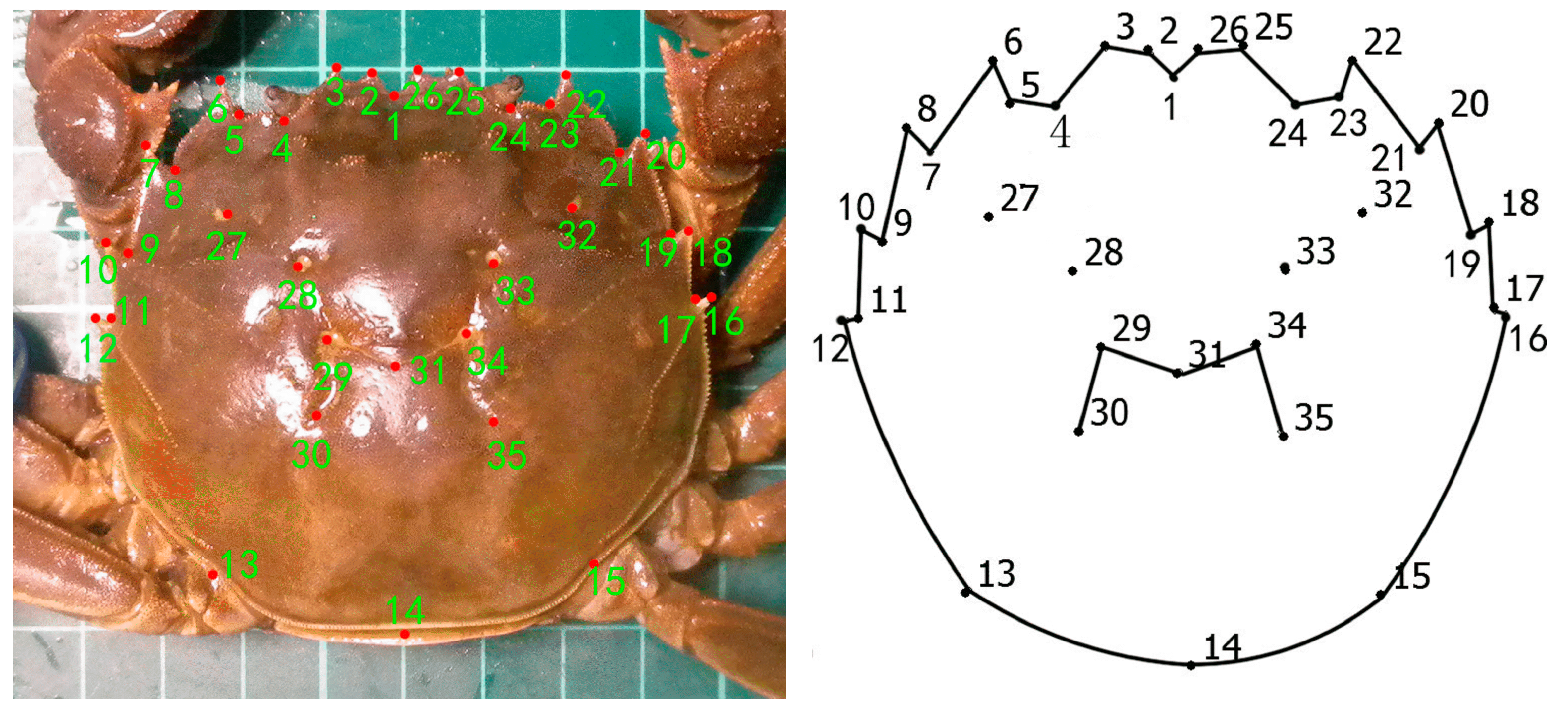
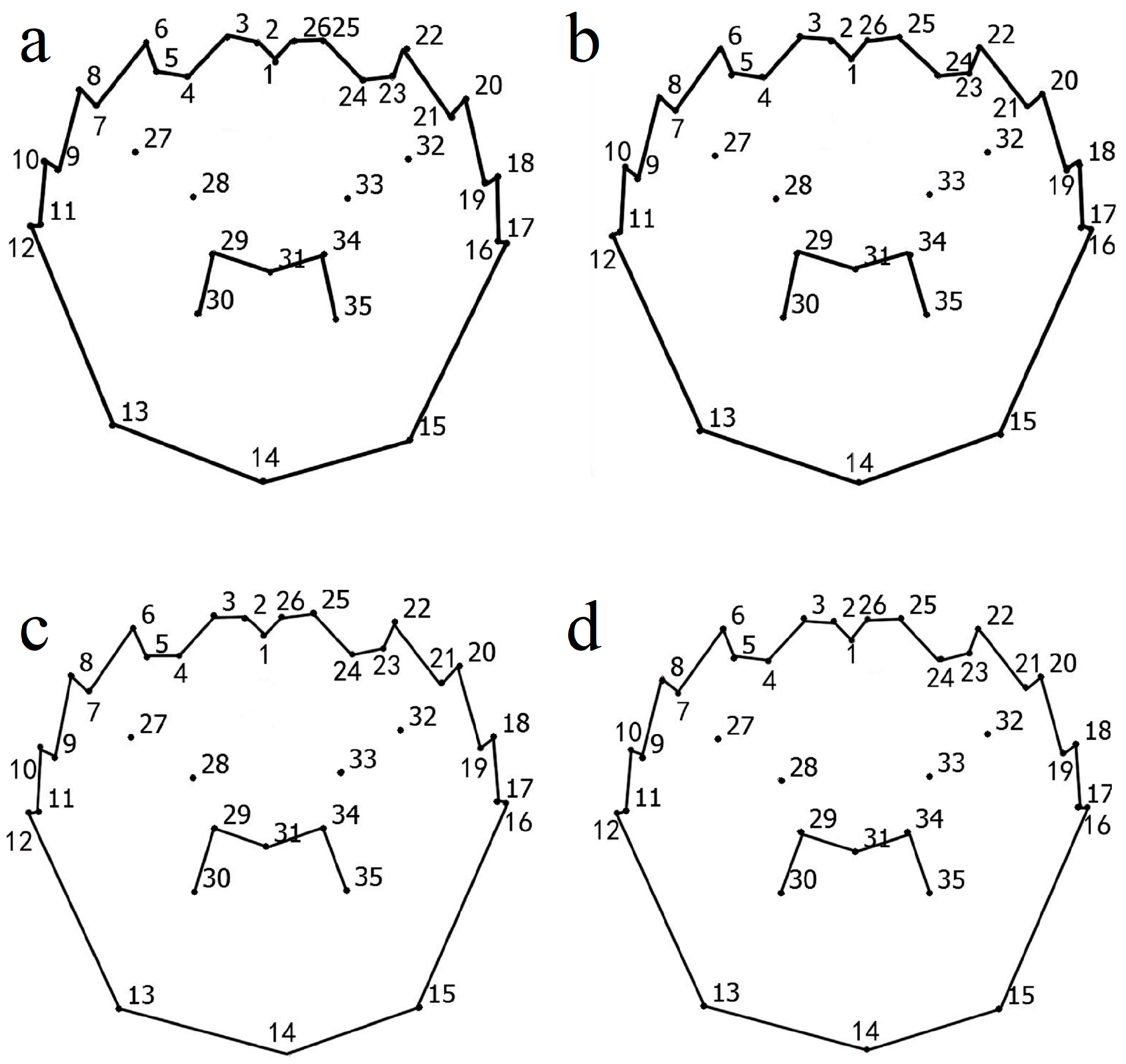
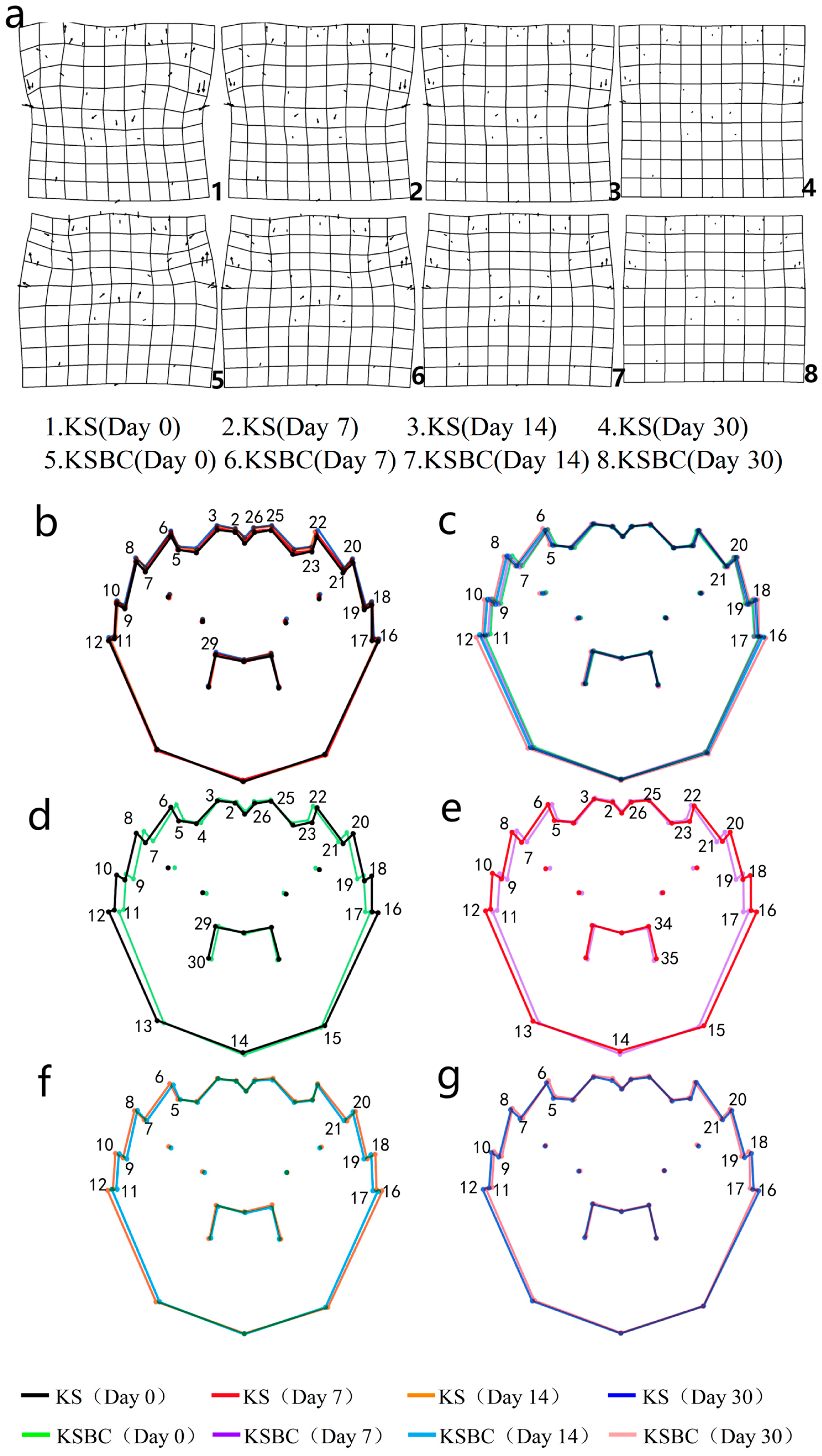

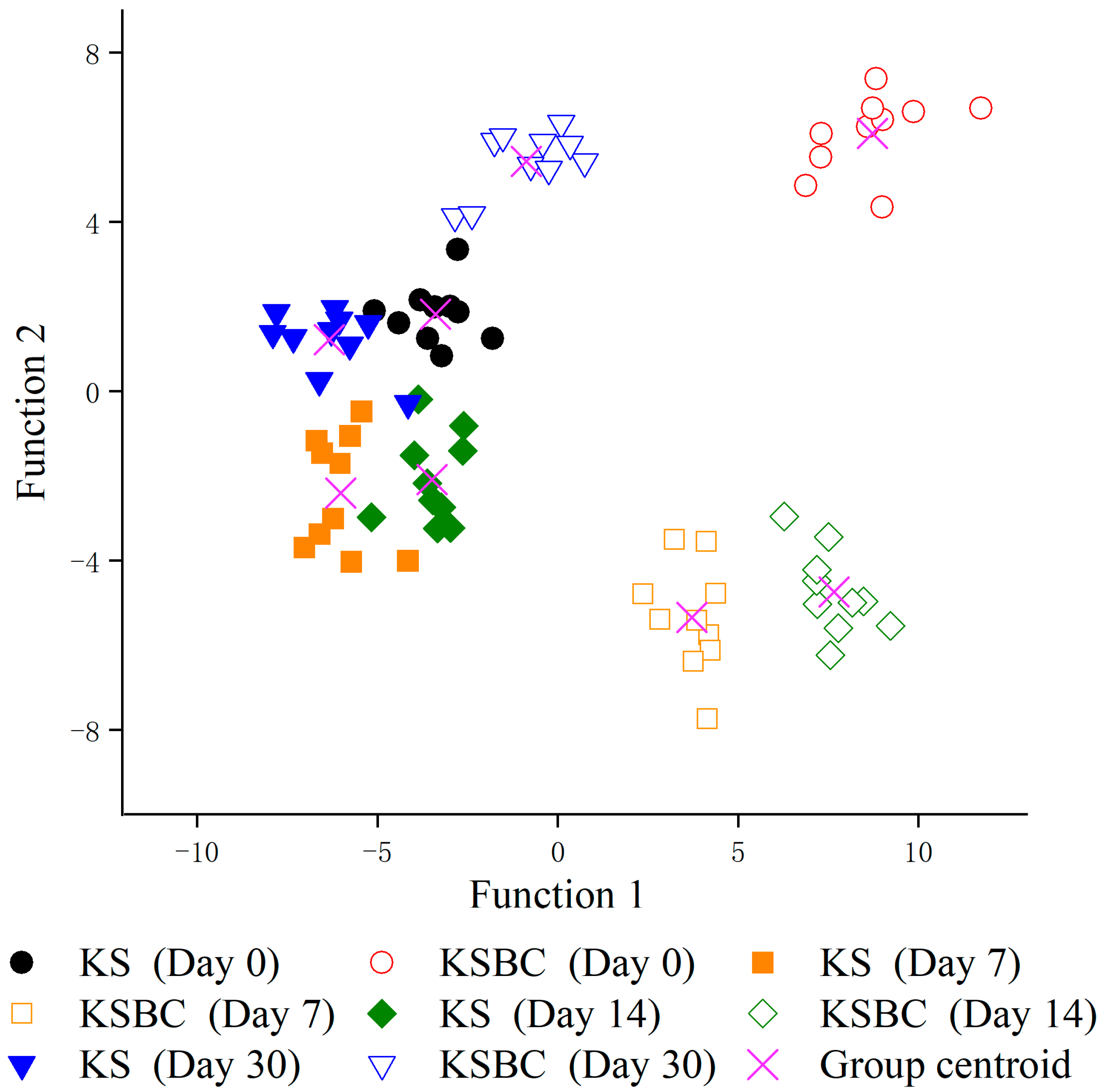
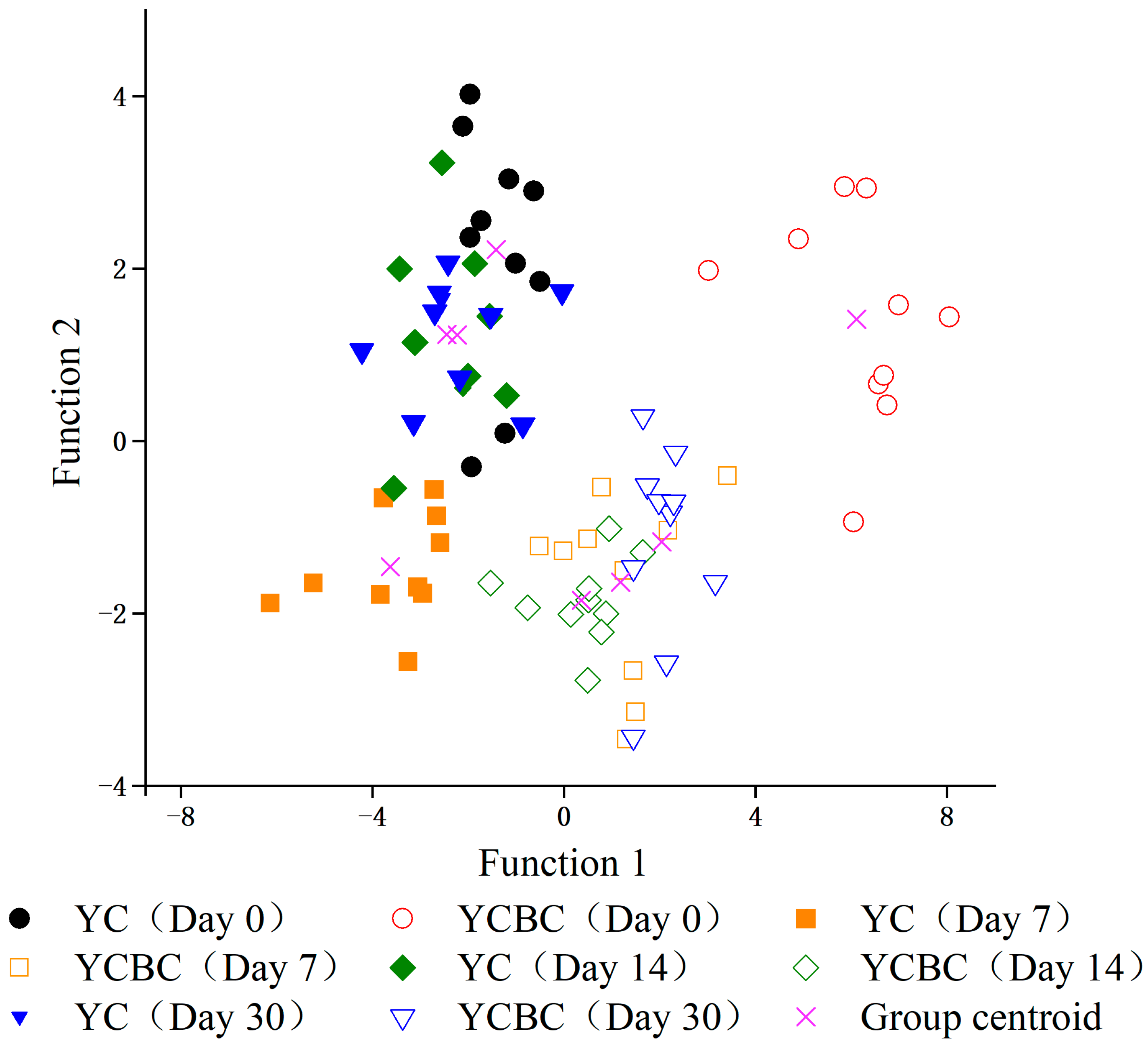
| Group Code | Sampling Date | Body Weight (g) | Carapace Length (mm) | Carapace Width (mm) | Body Height (mm) |
|---|---|---|---|---|---|
| JH | 10 October 2022 | 166.23 ± 23.96 | 65.89 ± 1.85 | 72.75 ± 3.30 | 36.19 ± 1.13 |
| KS | 165.83 ± 38.97 | 64.79 ± 3.60 | 70.48 ± 5.15 | 35.46 ± 1.76 | |
| YC | 121.80 ± 16.43 | 59.21 ± 2.17 | 64.74 ± 1.92 | 32.41 ± 1.84 | |
| KS | 17 October 2022 | 157.17 ± 28.84 | 64.39 ± 2.73 | 70.28 ± 3.41 | 35.55 ± 1.17 |
| KSBC | 171.64 ± 29.96 | 64.75 ± 2.25 | 71.77 ± 2.89 | 37.00 ± 0.85 | |
| YC | 139.81 ± 25.26 | 61.70 ± 2.51 | 67.93 ± 2.84 | 34.34 ± 1.79 | |
| YCBC | 168.42 ± 28.53 | 64.35 ± 1.48 | 71.25 ± 2.30 | 36.46 ± 1.44 | |
| KS | 24 October 2022 | 173.31 ± 29.59 | 65.26 ± 1.76 | 71.09 ± 2.92 | 36.92 ± 1.28 |
| KSBC | 164.97 ± 30.70 | 63.72 ± 2.11 | 71.58 ± 2.90 | 35.63 ± 1.15 | |
| YC | 131.51 ± 17.79 | 60.21 ± 3.01 | 66.23 ± 2.70 | 33.83 ± 2.09 | |
| YCBC | 165.76 ± 28.65 | 64.08 ± 1.73 | 71.11 ± 2.65 | 35.62 ± 1.03 | |
| KS | 8 November 2022 | 176.92 ± 26.12 | 65.85 ± 1.75 | 72.53 ± 2.13 | 37.36 ± 1.06 |
| KSBC | 172.67 ± 24.45 | 68.20 ± 2.56 | 75.99 ± 2.88 | 41.39 ± 1.29 | |
| YC | 135.47 ± 22.59 | 59.81 ± 3.02 | 66.60 ± 3.02 | 33.77 ± 1.21 | |
| YCBC | 165.17 ± 25.75 | 62.98 ± 2.16 | 70.86 ± 2.71 | 36.37 ± 1.65 |
| Landmark Type | Landmark Number | Definition |
|---|---|---|
| Type II | 2, 3, 25, 26 | Forehead margin |
| 4, 24 | Concave point between the frontal margin and the first lateral tooth | |
| 5, 23 | Inner vertex of the first side tooth | |
| 6, 22 | Outer apex of the first lateral tooth | |
| 7, 21 | Inner vertex of the second side tooth | |
| 8, 20 | The outer apex of the second lateral tooth | |
| 9, 19 | Inner vertex of the third side tooth | |
| 10, 18 | Lateral apex of the third lateral tooth | |
| 11, 17 | Inner vertex of the fourth side tooth | |
| 12, 16 | Outer apex of the fourth lateral tooth | |
| 13, 15 | Concave point of the posterior edge | |
| 27, 32 | Concave point between the two holes in the middle parotid region and the second side tooth | |
| 28, 33 | Two holes in the middle parotid region | |
| 29, 34 | M-shaped pattern on the vertex | |
| 30, 35 | Lower vertex of the M-shaped pattern | |
| 31 | M-shaped pattern center | |
| Type III | 1 | Frontal margin center |
| 14 | Lower vertex of the shell length |
| Group | Discrimination Accuracy | |||||||
|---|---|---|---|---|---|---|---|---|
| Original Crabs (Day 0) | “Bathed” Crabs (Day 0) | Original Crabs (Day 7) | “Bathed” Crabs (Day 7) | Original Crabs (Day 14) | “Bathed” Crabs (Day 14) | Original Crabs (Day 30) | “Bathed” Crabs (Day 30) | |
| Original crabs (Day 0) | 10 (100%) * | 0 | 0 | 0 | 0 | 0 | 0 | 0 |
| “Bathed” crabs (Day 0) | 0 | 10 (100%) | 0 | 0 | 0 | 0 | 0 | 0 |
| Original crabs (Day 0) | 0 | 0 | 10 (100%) | 0 | 0 | 0 | 0 | 0 |
| “Bathed” crabs (Day 0) | 0 | 0 | 0 | 10 (100%) | 0 | 0 | 0 | 0 |
| Original crabs (Day 0) | 0 | 0 | 0 | 0 | 10 (100%) | 0 | 0 | 0 |
| “Bathed” crabs (Day 0) | 0 | 0 | 0 | 0 | 0 | 10 (100%) | 0 | 0 |
| Original crabs (Day 0) | 0 | 0 | 0 | 0 | 0 | 0 | 10 (100%) | 0 |
| “Bathed” crabs (Day 0) | 0 | 0 | 0 | 0 | 0 | 0 | 0 | 10 (100%) |
| Group | Discrimination Accuracy | |||||||
|---|---|---|---|---|---|---|---|---|
| Original Crabs (Day 0) | “Bathed” Crabs (Day 0) | Original Crabs (Day 7) | “Bathed” Crabs (Day 7) | Original Crabs (Day 14) | “Bathed” Crabs (Day 14) | Original Crabs (Day 30) | “Bathed” Crabs (Day 30) | |
| Original crabs (Day 0) | 10 (100%) * | 0 | 0 | 0 | 0 | 0 | 0 | 0 |
| “Bathed” crabs (Day 0) | 0 | 10 (100%) | 0 | 0 | 0 | 0 | 0 | 0 |
| Original crabs (Day 0) | 0 | 0 | 10 (100%) | 0 | 0 | 0 | 0 | 0 |
| “Bathed” crabs (Day 0) | 0 | 0 | 0 | 10 (100%) | 0 | 0 | 0 | 0 |
| Original crabs (Day 0) | 0 | 0 | 0 | 0 | 10 (100%) | 0 | 0 | 0 |
| “Bathed” crabs (Day 0) | 0 | 0 | 0 | 0 | 0 | 10 (100%) | 0 | 0 |
| Original crabs (Day 0) | 0 | 0 | 0 | 0 | 0 | 0 | 10 (100%) | 0 |
| “Bathed” crabs (Day 0) | 0 | 0 | 0 | 0 | 0 | 0 | 0 | 10 (100%) |
Disclaimer/Publisher’s Note: The statements, opinions and data contained in all publications are solely those of the individual author(s) and contributor(s) and not of MDPI and/or the editor(s). MDPI and/or the editor(s) disclaim responsibility for any injury to people or property resulting from any ideas, methods, instructions or products referred to in the content. |
© 2023 by the authors. Licensee MDPI, Basel, Switzerland. This article is an open access article distributed under the terms and conditions of the Creative Commons Attribution (CC BY) license (https://creativecommons.org/licenses/by/4.0/).
Share and Cite
Xu, Y.; Xue, J.; Liu, H.; Jiang, T.; Chen, X.; Yang, J. Identification of “Bathed” Chinese Mitten Crabs (Eriocheir sinensis) Using Geometric Morphological Analysis of the Carapace. Fishes 2024, 9, 6. https://doi.org/10.3390/fishes9010006
Xu Y, Xue J, Liu H, Jiang T, Chen X, Yang J. Identification of “Bathed” Chinese Mitten Crabs (Eriocheir sinensis) Using Geometric Morphological Analysis of the Carapace. Fishes. 2024; 9(1):6. https://doi.org/10.3390/fishes9010006
Chicago/Turabian StyleXu, Yiqian, Junren Xue, Hongbo Liu, Tao Jiang, Xiubao Chen, and Jian Yang. 2024. "Identification of “Bathed” Chinese Mitten Crabs (Eriocheir sinensis) Using Geometric Morphological Analysis of the Carapace" Fishes 9, no. 1: 6. https://doi.org/10.3390/fishes9010006
APA StyleXu, Y., Xue, J., Liu, H., Jiang, T., Chen, X., & Yang, J. (2024). Identification of “Bathed” Chinese Mitten Crabs (Eriocheir sinensis) Using Geometric Morphological Analysis of the Carapace. Fishes, 9(1), 6. https://doi.org/10.3390/fishes9010006






